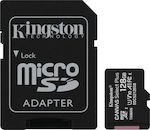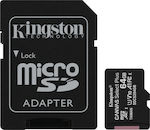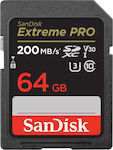Two identical 1TB disks were purchased (Toshiba Canvio Basics 2018) today, March 5th, for about 50€ each from a well-known electronics chain. When you get it, format one to ntfs or exFAT from Windows, to hfs or exFAT from Mac. From Windows, there is no option to format to fat32, but you can format it from Linux or with a special program on Windows to fat32 to make it compatible everywhere, but it sacrifices small files. If you choose exFAT, it can support large files and is compatible with both Windows and Mac, except for some Linux distributions that require third-party software to play exFAT and many TVs and devices that only support fat32. If it is intended only for Windows, NTFS is better than all.
-> I chose this one because of its reviews and my experience with Toshiba drives, as I have a 5-year-old Intenso external drive with a Toshiba drive inside that works perfectly so far with 100% health.
-> After formatting to NTFS, when connected via USB 3.0 with its cable, I ran a benchmark with CrystalMark and got Seq read 135 MB/s and Seq write at 143 MB/s (very good speed for a 2.5-inch HDD at 5400RPM) and at 4KiB Q8T8 read at 0.5 MB/s and 4KiB Q8T8 write at 6.5 MB/s on a USB 2.0 port or a 3.0 port but using a micro USB cable instead of its own USB 3.0 cable, running as USB 2.0, I got Seq read at 40.45 MB/s and Seq write at 37.1 MB/s (and at 4KiB Q8T8 read at 0.53 MB/s and 4KiB Q8T8 write at 6.1 MB/s).
-> The drive internally is a Toshiba (mq04ubf100) and does not have a sata interface that can be put into an adapter to output micro USB 3.0, but the drive is directly micro USB 3.0, meaning the drive's board outputs micro-usb 3.0 and not sata, which would make it difficult to connect to another case or computer with the usual sata cables if the plug breaks, to save your data, for now, it works fine. It has a nice case, is lightweight, and well-built, and you can always carry it with you.
-> A plus is that if you connect it as USB 3.0 with its cable to a USB 3.0 port (the blue ones), the LED turns blue, while if the connection is not with USB 3.0 and is USB 2.0, then the LED turns white, so you know if it is going as fast as it can.
-> The cable is of moderate quality USB 3.0, I wanted it a little longer. Note that if you have it with you and don't have its cable, you can connect it with your mobile phone's cable (if it is microUSB), but it will go slower because the mobile phone's cable supports USB 2.0 and not the 3.0 standard.
I bought two 1TB each and did not get one of 2TB because if it breaks, nothing is immortal, I prefer to have half the data on each disk instead of all together on a large one, even if it costs more to have two instead of one. I didn't go for WD and Seagate, which are very common because every time I bought WD and Seagate in the past, they happened to break relatively quickly with progressively low health. Hitachi and Toshiba have worked well for me. However, all HDDs deteriorate easily over time because they have mechanical and magnetic parts, and we must keep backups because if valuable data is lost, it does not come back, nor can the data be rebuilt.
Update July 25, 2020, it has been functioning normally so far (4 months) without any errors, with 100% health in situations of large backups and data transfers every month.
Update December 3, 2020, both 1TB twin disks perform the same monthly backups of multiple GB (deletions and copies) since I got them as backups for each other, and they both work very well without their performance declining over time.
Update February 27, 2024, it is performing very well.
It's a good purchase, now we'll see how well it will perform and I will evaluate it again after some time because time will show how reliable it is.

















































